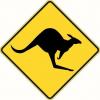Any progress I have made in sharpening has been self taught after reading here. The recent sharpening thread was insightful to me, they always are ..
I use a Veritas jig for chisels and plane blades, my reason for not free hand sharpening is that I cant seem to repeat the same angle over and over ..
Anyway .. lately I have been sharpening the entire bevel.. Basically polishing it up to 13000 (sigma) and then stropping it.. Afterwards I do a micro bevel with only the 13,000 grit stone and the strop..
This is as sharp as i have gotten to date, but I know it could be better..
The micro bevel I create that way is microscopic. I ensure that the back is flat and the sharpening process leaves a burr after each stone.. but for some reason, I cant ever seem to really nail it ..
People talk about being able to shave with a chisel or plane blade.. I could do it but would have a few dozen blood soaked toilet paper spots on my face ..
I would love to take a class.. Or sharpen a chisel in front of some old timer, who could say ... " hey ! what was that ! " .. or give pointers..
Would love some videos or similar to watch..






 Reply With Quote
Reply With Quote






